 Last additions - Ota-ku 大田区 Last additions - Ota-ku 大田区 |

In front of the station.Jun 13, 2017
|
|

Jun 13, 2017
|
|

Jun 13, 2017
|
|

Jun 13, 2017
|
|

Jun 13, 2017
|
|

Jun 13, 2017
|
|

Jun 13, 2017
|
|

Jun 13, 2017
|
|

Jun 13, 2017
|
|

Jun 13, 2017
|
|

Interacting with the crowd. They love foreigners and babies in the crowd. They let them beat their drum.Jun 13, 2017
|
|

Jun 13, 2017
|
|

Maybe about 300,000 spectators lined the streets from the train station to the temple.Jun 13, 2017
|
|

Prayers in the main worship hall.Jun 13, 2017
|
|

Jun 13, 2017
|
|

Everyone paraded to the temple and entered the temple for prayers, then dispersed. The lantern parade lasted from 6 pm till about 11 pm or so.Jun 13, 2017
|
|

Jun 13, 2017
|
|

Jun 13, 2017
|
|

Jun 13, 2017
|
|

Jun 13, 2017
|
|

Ikegami Honmonji taiko drummers.Jun 13, 2017
|
|

Jun 13, 2017
|
|

Jun 13, 2017
|
|

Path to the temple.Jun 13, 2017
|
|

Each group is led by firemen's standards (matoi) which are poles with streamers. These were originally used by firemen's units in the Edo Period as their banner. Now used at festivals and for ceremonial purposes only.Jun 13, 2017
|
|

Jun 13, 2017
|
|

Marching priests.Jun 13, 2017
|
|

Following the firemen's standards are musicians. The drummers are the most prominent. They beat handheld, fan-shaped taiko drums (called uchiwa daiko). Amazing how loud these little flat drums can be.Jun 13, 2017
|
|

At the end of each group is a flowery (cherry blossoms) lantern float (called mando). It's a lantern pagoda with flowery streamers.Jun 13, 2017
|
|

The festival's main event is an evening lantern parade (called Mando) of thousands of Nichiren believers from all over Japan. They come in groups according to their respective temple or district.Jun 13, 2017
|
|

Jun 13, 2017
|
|

Since most of Japan's big festivals are Shinto, it's nice to see a large-scale Buddhist festival.Jun 13, 2017
|
|

On Oct. 12, the annual Oeshiki Festival (お会式) was held at Ikegami Honmonji temple. It commemorates the anniversary of Nichiren's death. He died here in 1282.Jun 13, 2017
|
|

JAL plane parked outside the maintenance hangar.JAL sent out an online questionaire afterward for feedback about the tour. I told them that many foreigners were also interested in the tours so they should provide foreign language info too. I'm told that there are no tours like this in the States.Sep 27, 2016
|
|

Sep 27, 2016
|
|

Tail of the JAL "Fuji" DC-8. Looks like they are restoring the plane.Sep 27, 2016
|
|

First class section of JAL's "Fuji" DC-8.Sep 27, 2016
|
|
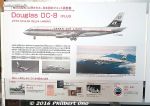
About the JAL "Fuji" DC-8.Sep 27, 2016
|
|

One corner of the hangar preserved the cockpit/lounge section of the JAL "Fuji" DC-8. This was Japan's first passenger jet put into service in 1960, replacing prop planes. This plane had 104 seats, 36 first class and 68 tourist class.Sep 27, 2016
|
|

The lucky treat of the JAL tour was seeing Japan's Air Force One (actually, Air Force Two). The Japanese government plane that carries the prime minister or emperor.They are normally parked at Chitose Airport in Hokkaido. Flown by the Air Defense Force, but maintained by JAL. Japan's Air Force One/Two will be retired in 2019, to be replaced by Boeing 777. The new Boeing 777 will be maintained by ANA. Photos were allowed, but not allowed to be posted online.Sep 27, 2016
|
|

Photography was permitted, but no videos. You can post photos online, but cannot show personnel (I assume faces) and the other tour participants. Also cannot show any plane from another airline which might be taxiing or flying outside in the background.Sep 27, 2016
|
|

JAL Boeing 787.Sep 27, 2016
|
|

Wore hard hats and toured JAL's maintenance hangar for about 40 min. JAL's airplane maintenance hangar at Haneda Airport. Huge facility.Sep 27, 2016
|
|

JAL's tour also started with a 30-min. talk and slide show in Japanese.Sep 27, 2016
|
|

Sep 27, 2016
|
|

Sep 27, 2016
|
|

Vintage JAL luggage tags.Sep 27, 2016
|
|

The same type of happi coat the Beatles wore when they got off the JAL DC-8 ("Matsushima") at Haneda for their Budokan concerts in 1966.The back has the kanji for kotobuki (寿) meaning "celebration." Famous story behind how a JAL stewardess got John to wear the happi coat. "Wearing a happi coat when you land in Japan would make the fans really happy!" "Good idea!," said John who then wore it. The other Beatles followed and wore one too. A major, historic PR coup for JAL.Sep 27, 2016
|
|

Sep 27, 2016
|
|

Model of JAL Boeing 747.Sep 27, 2016
|
|

Historical model planes in JAL's Sky Museum. The museum is quite big, and we didn't have time to see everything.Sep 27, 2016
|
|

History of JAL planes.Sep 27, 2016
|
|

JAL's cabin attendant uniform worn in the 1970s (left) and 1980s (right).Sep 27, 2016
|
|

TDA's (Toa Domestic Airways) cabin attendant uniform (left) and JAS (Japan Air System) cabin attendant uniform. Bot TDA and JAS merged with JAL.Sep 27, 2016
|
|

JAL's first cabin attendant uniform appeared in Aug. 1951.Sep 27, 2016
|
|

Cabin attendant uniforms throughout JAL's history (including TDA aka Japan Air System that merged with JAL). Sep 27, 2016
|
|
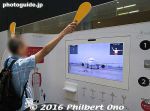
A visitor tries an interactive exhibit for directing a JAL plane to a gate.Sep 27, 2016
|
|

JAL's "Sky Museum" shows JAL's history, interactive exhibits like a cockpit, first-class seats, and a special room showing special plane seats used by the emperor before Japan got its own Japanese Air Force One. In Japanese only thoughSep 27, 2016
|
|

Go to the JAL Maintenance Center 1 Building and show your reservation to the reception. They will give you a pass. You can arrive 30 min. before the tour starts. Use the time to see this Sky Museum.The tour pass is on a JAL cell phone neck strap that you can keep.
*Note that if you take the tour and take pictures and want to post pictures online, you will need JAL's approval. They don't allow photos of JAL personnel and tour guests in online photos. All these photos have been approved by JAL for posting here.Sep 27, 2016
|
|

JAL (Japan Airiines) offers free tours of their maintenance facilities and their Sky Museum at Haneda Airport in Tokyo. You can see planes in a huge hangar being serviced. You have to make reservations at their website, but everything is in Japanese. They have four 90-min. tours almost daily, but only in Japanese. You should reserve weeks or months in advance because tours get booked up quickly. However, when people cancel their reservations, tours may open up. You have to keep checking. Children must be at least elementary school age. Shin Seibijo Station on the Haneda Monorail. JAL's maintenance hangar is a 10-15 min. walk from Shin Seibijo Station on the Haneda Monorail running from JR Hamamatsucho. http://www.jal.co.jp/kengaku/tour/Sep 27, 2016
|
|

How workers get around. Enjoyed the tour.Sep 27, 2016
|
|

Jet engine cowlings.Sep 27, 2016
|
|

Sep 27, 2016
|
|

Extra dock in the maintenance hangar.Sep 27, 2016
|
|

ANA plane parked outside the maintenance hangar.Sep 27, 2016
|
|

Sep 27, 2016
|
|

Sep 27, 2016
|
|

Sep 27, 2016
|
|

Sep 27, 2016
|
|

Sep 27, 2016
|
|

Always impressive to see a jet plane up close. We see it only on the outside, cannot go inside the plane.Sep 27, 2016
|
|

ANA planeSep 27, 2016
|
|

The hangar can get very noisy when they are testing an engine.Sep 27, 2016
|
|

Sep 27, 2016
|
|

Sep 27, 2016
|
|

Sep 27, 2016
|
|

Jet engine undergoing maintenance.Sep 27, 2016
|
|

Jet engine undergoing maintenance.Sep 27, 2016
|
|

Sep 27, 2016
|
|

Extra hangar space.Sep 27, 2016
|
|

Sep 27, 2016
|
|

They have to replace the tires quite often, every 2 months or so.Sep 27, 2016
|
|

Tires are not that huge. Tires are inflated with nitrogen, not air (one thing that they always mention).Sep 27, 2016
|
|

TiresSep 27, 2016
|
|

TiresSep 27, 2016
|
|

Sep 27, 2016
|
|

Where the tail fits.Sep 27, 2016
|
|

Passenger seats were taken out and the cushions replaced.Sep 27, 2016
|
|

Engine removed from the plane.Sep 27, 2016
|
|

ANA's Boeing 787 inside the maintenance hangar at Haneda Airport. Sep 27, 2016
|
|

ANA's Boeing 787Sep 27, 2016
|
|

Sep 27, 2016
|
|

ANA's airplane maintenance hangar at Haneda Airport. Photography was permitted, but no videos. You can post photos online, but you need their approval. These photos here have been approved by ANA. They don't allow ANA personnel and the other tour participants to be pictured. Also cannot show any non-ANA plane.Sep 27, 2016
|
|
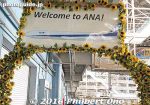
After the slide show lecture, we wore a hard hat and walked on the overpass to the plane hangars. There were around 80 people in the tour and they divided us into around 15 people per group for the hangar tour. Each group had a guide explaining things in Japanese.Sep 27, 2016
|
|

Free souvenir of the tour. Cell phone strap with an ANA maintenance man.Sep 27, 2016
|
|

Tire, cockpit window, lights.Sep 27, 2016
|
|

ANA's Peanuts (Charlie Brown) plane.Sep 27, 2016
|
|

ANA's whale plane.Sep 27, 2016
|
|

ANA's lecture hall has some exhibits like model planes.Sep 27, 2016
|
|

In this lecture hall, ANA's tour started with a 30-min. talk and video about flight, their planes, Haneda Airport, etc.Part of ANA's talk was about how planes fly. They demonstrated how wind can lift the wings of a toy plane.Sep 27, 2016
|
|
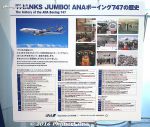
Panel about the 747. ANA retired its last Boeing 747 in March 2014. ANA first flew 747s in 1979. Will be missed.Sep 27, 2016
|
|

ANA model planes in the lobby.Sep 27, 2016
|
|

Sep 27, 2016
|
|

Sep 27, 2016
|
|

ANA cockpit in the lobby.Sep 27, 2016
|
|

ANA Gundam in the lobby.Sep 27, 2016
|
|

PoseSep 27, 2016
|
|

Gift shop sells ANA goods.Sep 27, 2016
|
|

Reception lobby of the ANA Maintenance Facility's ANA Component Maintenance Building. There's a gift shop, model planes, and other exhibits. At lunch time, they sold bento so we had lunch here after the tour.Sep 27, 2016
|
|

When you enter the building, you will be in the reception lobby.Sep 27, 2016
|
|

On the left is the ANA Component Maintenance Building where you check-in for the tour. Show the security guard your reservations (printout of the email confirmation) to enter the building.Sep 27, 2016
|
|

After passing the JAL maintenance hangar, you will see this overpass connecting the ANA buildings.Sep 27, 2016
|
|

From Haneda Airport's International terminal, you can see ANA's maintenance hangars at the end of Runway A which is one of the airport's original runways.Sep 27, 2016
|
|

Shin Seibijo Station on the Haneda Monorail. ANA's maintenance hangar is a 10-15 min. walk from this station.Sep 27, 2016
|
|

The ANA (and JAL) Maintenance Facilities are next to each other near Shin Seibijo Station on the Haneda Monorail going to Haneda Airport from JR Hamamatsucho Station.Sep 27, 2016
|
|

ANA (All Nippon Airways) offers free tours of their maintenance facilities at Haneda Airport in Tokyo. You can see planes in a huge hangar being serviced.You have to make reservations at their website, but everything is in Japanese. They have four 90-min. tours almost daily, but only in Japanese. (Pamphlet has some English.) You should reserve weeks or months in advance because tours get booked up quickly. However, when people cancel their reservations, tours may open up. You have to keep checking. Children must be at least elementary school age. http://www.ana.co.jp/group/kengaku/outline.htmlSep 27, 2016
|
|
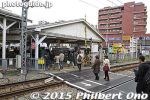
Ikegami Station on the Tokyu Ikegami LineSep 19, 2016
|
|

Ikegami Station on the Tokyu Ikegami LineSep 19, 2016
|
|

Crowd goes home after setsubun.Sep 19, 2016
|
|

The beans included a square piece of caramel candy. The paper says "Lucky beans," "Setsubun," the name of the temple, and an ad for a local business.Sep 19, 2016
|
|

My lucky beans. The beans are in little plastic bags with a paper bottom.Sep 19, 2016
|
|

Sep 19, 2016
|
|

They threw a lot of beans. I think just about everyone was able to catch beans.Sep 19, 2016
|
|

Setsubun bean throwing at Ikegami Honmonji temple, Tokyo.They threw a lot of beans for about 10 min. Interesting that they did not say, "Oni wa soto! Fuku wa uchi!" We caught a good haul of lucky beans.Sep 19, 2016
|
|

Former yokozuna Akebono was also supposed to throw beans, but he had to be hospitalized for a swollen right leg. Too bad. Sep 19, 2016
|
|

Matsumoto Iyo to throw beans for setsubun at Ikegami Honmonji temple, Tokyo.Sep 19, 2016
|
|

Setsubun at Ikegami Honmonji temple, Tokyo.Sep 19, 2016
|
|

Because of the temple's Rikidozan connection, there were a number of pro wrestlers as well. (No sumo wrestlers.)Sep 19, 2016
|
|

That's the temple's official mascot (Kozo-kun). Sep 19, 2016
|
|

In front were two minor "idol" singers and a red oni. It was nice that they posted the names of the celebrities, but I didn't know any of them except one...Sep 19, 2016
|
|

The bean throwers included minor celebrities, former pro wrestlers, and men and women born in the Year of the Monkey.Sep 19, 2016
|
|

At 3 pm, the bean throwers appeared and took their positions after attending a ceremony inside the temple.Sep 19, 2016
|
|

Press cameramen behind us on their own platform to record the event.Sep 19, 2016
|
|

Matsumoto Iyo's place.Sep 19, 2016
|
|

Sep 19, 2016
|
|

About 20 min. later, the place got full.Sep 19, 2016
|
|

The bean throwing was going to start at 3 pm. We stood in front of the platform at 2:15 pm. They sectioned off this area for kids (and elderly).Sep 19, 2016
|
|

Bringing out large baskets of beans.Sep 19, 2016
|
|

Sep 19, 2016
|
|

They will throw beans on both the left and right sides of the platform.Sep 19, 2016
|
|

Sep 19, 2016
|
|

Crowd starts to gather for the bean throwing.Sep 19, 2016
|
|

Incense burnerSep 19, 2016
|
|

Beating a drum-like instrument.Sep 19, 2016
|
|

They entered the temple and held a service at 2 pm. Sep 19, 2016
|
|

Priests procession heading for Ikegami Honmonji's main worship hall on Setsubun day, Feb. 3.Sep 19, 2016
|
|

Sep 19, 2016
|
|

Ogre (oni) appear in a procession.Sep 19, 2016
|
|

Pretty cold day, but it was sunny with little wind.Sep 19, 2016
|
|
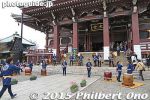
Taiko drum performance in early April in front of the temple.Sep 19, 2016
|
|

Setsubun ceremonies on Feb. 3 start at 1 pm. Bean throwing (mamemaki) at 3 pm.Sep 19, 2016
|
|
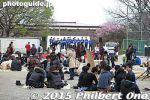
Sep 19, 2016
|
|

Sep 19, 2016
|
|
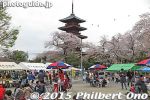
Sep 19, 2016
|
|

Taiko drummerSep 19, 2016
|
|
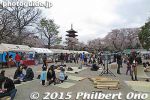
Sep 19, 2016
|
|

Before the bean throwing, a few taiko drummer friends performed at 1 pm for 20 min. on the bean-throwing platform in front of the temple's Hondo main hall.Sep 19, 2016
|
|
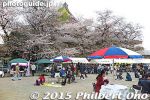
Sep 19, 2016
|
|

On Feb. 3, Ikegami Honmonji holds the annual Setsubun ceremony and bean throwing.Sep 19, 2016
|
|

Sep 19, 2016
|
|
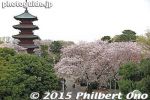
Ikegami Honmonji, TokyoSep 19, 2016
|
|
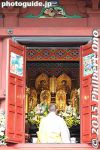
Sep 19, 2016
|
|
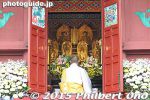
Prayers inside the pagoda.Sep 19, 2016
|
|
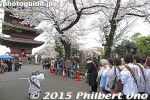
Sep 19, 2016
|
|
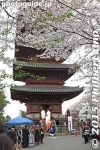
Sep 19, 2016
|
|
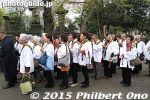
Sep 19, 2016
|
|
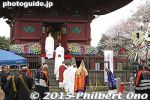
Sep 19, 2016
|
|
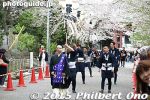
Sep 19, 2016
|
|
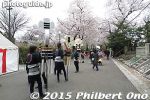
Sep 19, 2016
|
|
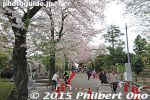
Sep 19, 2016
|
|
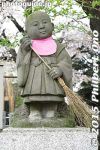
Boy priest sweeping at Ikegami Honmonji, Tokyo.Sep 19, 2016
|
|
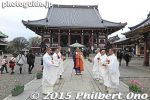
A spring ceremony is held in early April.Sep 19, 2016
|
|
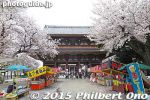
Sep 19, 2016
|
|

Statue of Nichiren 日蓮聖人像Sep 19, 2016
|
|
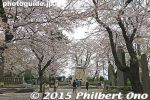
Sep 19, 2016
|
|
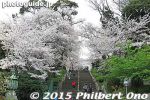
Sep 19, 2016
|
|
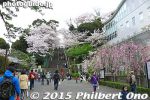
Sep 19, 2016
|
|
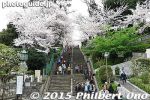
Stone steps to the temple amid cherry blossoms. 此経難持坂Sep 19, 2016
|
|
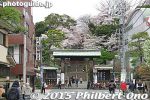
Somon Gate, the first gate you pass through to enter the temple and one of the few structures which were not destroyed during World War II. 総門Sep 19, 2016
|
|
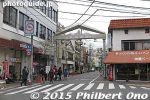
In front of Ikegami Station on the Tokyu Ikegami Line, follow this road for a short walk to Ikegami Honmonji temple.Sep 19, 2016
|
|
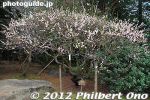
Mar 27, 2012
|
|
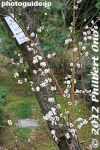
Mar 27, 2012
|
|
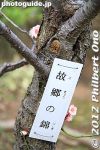
Mar 27, 2012
|
|
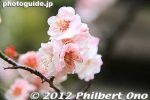
Mar 27, 2012
|
|
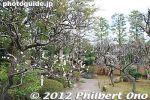
Mar 27, 2012
|
|
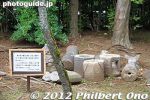
Remains of a torii that collapsed during the March 11, 2011 earthquake.Mar 27, 2012
|
|
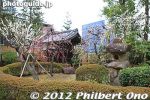
Mar 27, 2012
|
|
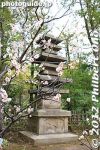
Mar 27, 2012
|
|
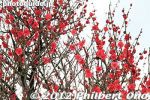
Mar 27, 2012
|
|
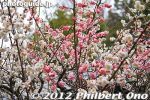
Mar 27, 2012
|
|
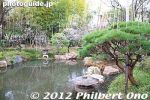
Mar 27, 2012
|
|
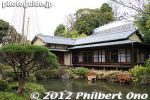
Japanese tea ceremony house and Japanese-style room for rent. 清月庵Mar 27, 2012
|
|
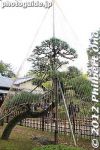
Mar 27, 2012
|
|
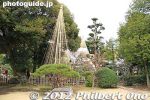
Mar 27, 2012
|
|
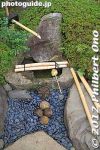
Called a Suikinkutsu, the water drops make a soothing sound like from a koto harp. Mar 27, 2012
|
|
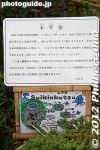
About the Suikinkutsu, a water drop harp.Mar 27, 2012
|
|
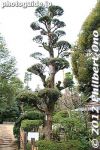
Mar 27, 2012
|
|
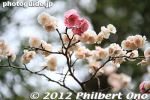
Mar 27, 2012
|
|
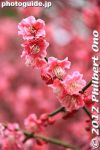
Mar 27, 2012
|
|
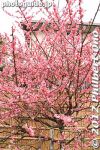
Mar 27, 2012
|
|
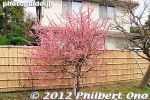
Mar 27, 2012
|
|
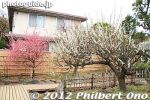
Walk further into the garden to see a few more plum trees.Mar 27, 2012
|
|
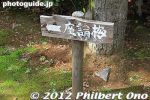
Mar 27, 2012
|
|
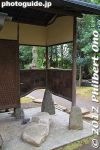
Mar 27, 2012
|
|
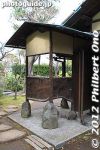
Mar 27, 2012
|
|
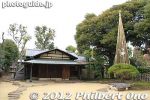
Mar 27, 2012
|
|
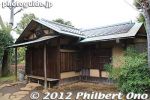
Mar 27, 2012
|
|
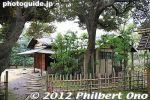
Japanese tea ceremony house for rent. 聴雨庵Mar 27, 2012
|
|
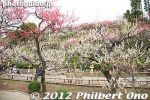
Ikegami Baien Plum Garden in Tokyo.Mar 27, 2012
|
|
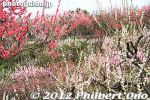
Mar 27, 2012
|
|
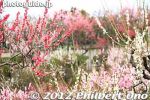
Mar 27, 2012
|
|
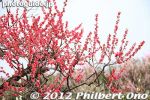
Mar 27, 2012
|
|
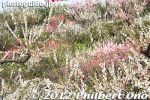
Mar 27, 2012
|
|
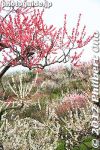
Ikegami Baien Garden plum blossoms in Ota, Tokyo.Mar 27, 2012
|
|
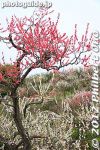
Mar 27, 2012
|
|
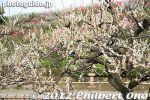
Mar 27, 2012
|
|

Mar 27, 2012
|
|
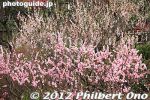
Mar 27, 2012
|
|
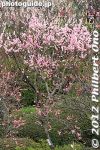
Mar 27, 2012
|
|
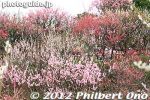
Mar 27, 2012
|
|
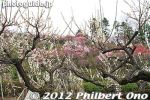
Mar 27, 2012
|
|
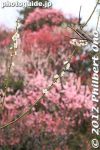
Mar 27, 2012
|
|
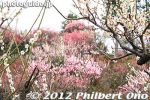
Mar 27, 2012
|
|
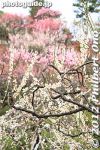
Plum blossoms at Ikegami Baien, TokyoMar 27, 2012
|
|
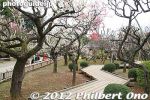
Mar 27, 2012
|
|

Mar 27, 2012
|
|

The varieties of plum blossoms at Ikegami Baien Garden.Mar 27, 2012
|
|

The plum blossom is Ota Ward's official flower.Mar 27, 2012
|
|
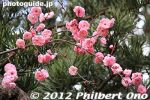
Mar 27, 2012
|
|
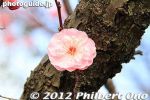
Mar 27, 2012
|
|
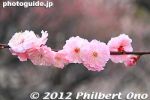
Mar 27, 2012
|
|
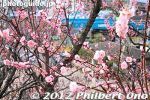
Mar 27, 2012
|
|
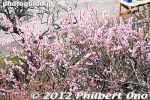
Mar 27, 2012
|
|
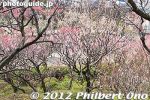
Mar 27, 2012
|
|
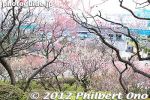
Mar 27, 2012
|
|
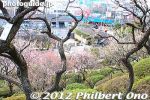
Mar 27, 2012
|
|
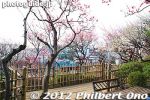
Small lookout deck at the top of the hillside of plum trees.Mar 27, 2012
|
|
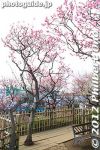
Mar 27, 2012
|
|
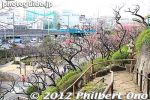
Mar 27, 2012
|
|

There are steps to go up the slope of plum trees.Mar 27, 2012
|
|
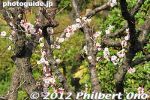
Mar 27, 2012
|
|
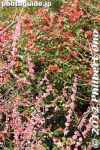
Mar 27, 2012
|
|
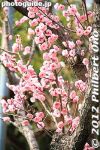
Mar 27, 2012
|
|
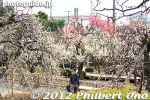
Mar 27, 2012
|
|
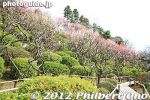
Mar 27, 2012
|
|
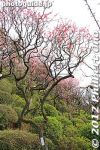
Mar 27, 2012
|
|
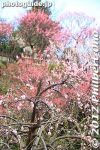
Plum blossoms at Ikegami Baien Garden, Ota Ward, TokyoMar 27, 2012
|
|
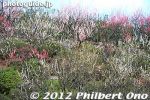
Mar 27, 2012
|
|
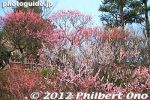
Plum blossoms at Ikegami Baien Garden, Ota Ward, TokyoMar 27, 2012
|
|
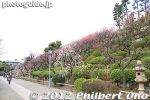
Ikegami Baien Garden, Ota Ward, TokyoMar 27, 2012
|
|
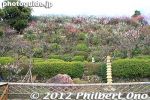
Mar 27, 2012
|
|
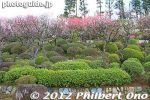
Mar 27, 2012
|
|
|
|